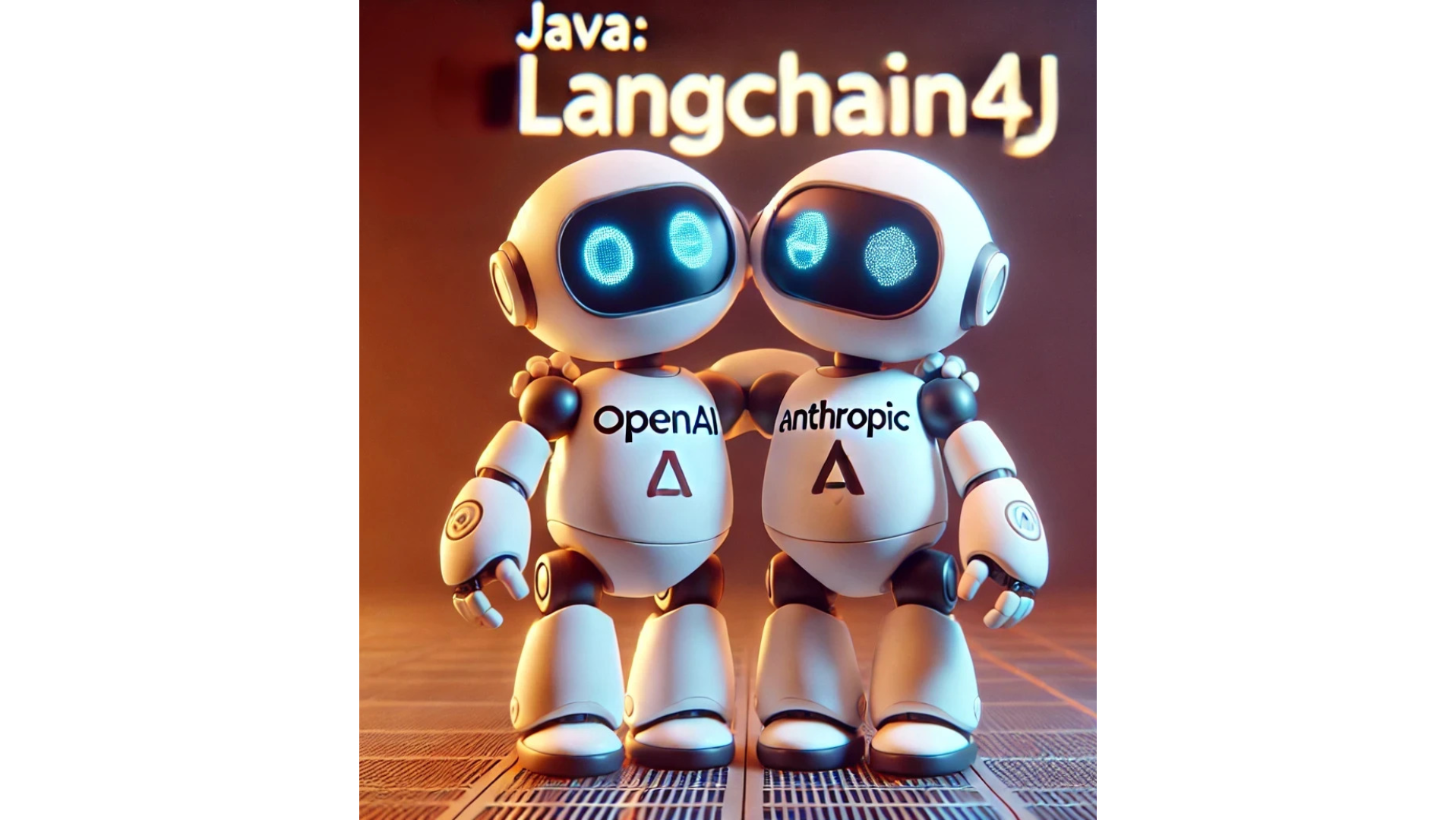Java Developer's Journey: Integrating OpenAI and Anthropic APIs with LangChain4j
 Georgii Turevich
Georgii Turevich
As a Java developer, I've often felt left out when it comes to working with Large Language Models (LLMs). Many LLM providers offer SDKs primarily for Python or JavaScript, leaving Java developers at a disadvantage. That's why I was excited to discover LangChain4j, a library that bridges this gap by providing a unified Java interface for interacting with multiple LLMs, including OpenAI and Anthropic.
In this article, I'll share my experience using LangChain4j to send API requests to both OpenAI and Anthropic, demonstrating some key features of the library that I found particularly useful.
How I Used LangChain4j with OpenAI and Anthropic
For those interested in exploring the full implementation or trying it out themselves, I've made the complete code and Maven configuration with all required dependencies available in my GitHub repository https://github.com/georgyturevich/langchain4j-demo
Now, let's look at an example of how I used LangChain4j to work with both OpenAI and Anthropic:
package com.example;
import dev.langchain4j.model.chat.ChatLanguageModel;
import dev.langchain4j.model.input.PromptTemplate;
import dev.langchain4j.model.openai.OpenAiChatModel;
import dev.langchain4j.model.anthropic.AnthropicChatModel;
import java.util.Map;
public class LangChain4jExample {
private static final String OPENAI_MODEL_NAME = "gpt-4o";
private static final String ANTHROPIC_MODEL_NAME = "claude-3-5-sonnet-20240620";
private static final double MODEL_TEMPERATURE = 0.7;
private static final int MODEL_MAX_TOKENS = 300;
public static void main(String[] args) {
// Initialize OpenAI model
OpenAiChatModel openAiChatModel = OpenAiChatModel.builder()
.apiKey(System.getenv("OPENAI_API_KEY"))
.modelName(OPENAI_MODEL_NAME)
.temperature(MODEL_TEMPERATURE)
.maxTokens(MODEL_MAX_TOKENS)
.build();
// Initialize Anthropic model
AnthropicChatModel anthropicChatModel = AnthropicChatModel.builder()
.apiKey(System.getenv("ANTHROPIC_API_KEY"))
.modelName(ANTHROPIC_MODEL_NAME)
.temperature(MODEL_TEMPERATURE)
.maxTokens(MODEL_MAX_TOKENS)
.build();
// Create a prompt template
PromptTemplate template = PromptTemplate.from(
"What is the capital of {{country}}? What places should I visit here?.");
// Use the template with OpenAI and Anthropic
String prompt = template.apply(Map.of("country", "France")).toString();
printModelResponse(openAiChatModel, prompt, "OpenAI");
printModelResponse(anthropicChatModel, prompt, "Anthropic");
}
private static void printModelResponse(ChatLanguageModel model, String prompt, String modelName) {
String modelResponse = model.generate(prompt);
String responseMessage = modelName + " Response: " + modelResponse;
System.out.println(responseMessage);
}
}
Before running this code, I made sure to set my API keys as environment variables:
export OPENAI_API_KEY="your_openai_api_key_here"
export ANTHROPIC_API_KEY="your_anthropic_api_key_here"
To obtain these API keys, you can create them at the following locations:
Anthropic: https://console.anthropic.com/settings/keys
Remember to keep these keys secure and never share them publicly.
Key Features I Found Useful
Unified Interface: I loved how LangChain4j provides a common
ChatLanguageModelinterface. This made it incredibly easy to switch between different LLM providers.Prompt Templates: The ability to create reusable templates with variables was a game-changer for me. It made my code much more flexible and easier to maintain.
Consistent Configuration: I appreciated how I could use the same settings across different providers. This consistency simplified my development process significantly.
My Takeaways
While this example only scratches the surface, I've found that LangChain4j offers a wide range of features beyond what I've demonstrated here. The library supports:
Integration with 15+ other LLM providers
Streaming of responses from LLMs
Working with embedding stores and models
And dozens other features
If you're a Java developer looking to work with LLMs, I highly recommend checking out LangChain4j. For a more comprehensive overview of LangChain4j's capabilities and detailed documentation, visit https://docs.langchain4j.dev.
Subscribe to my newsletter
Read articles from Georgii Turevich directly inside your inbox. Subscribe to the newsletter, and don't miss out.
Written by
